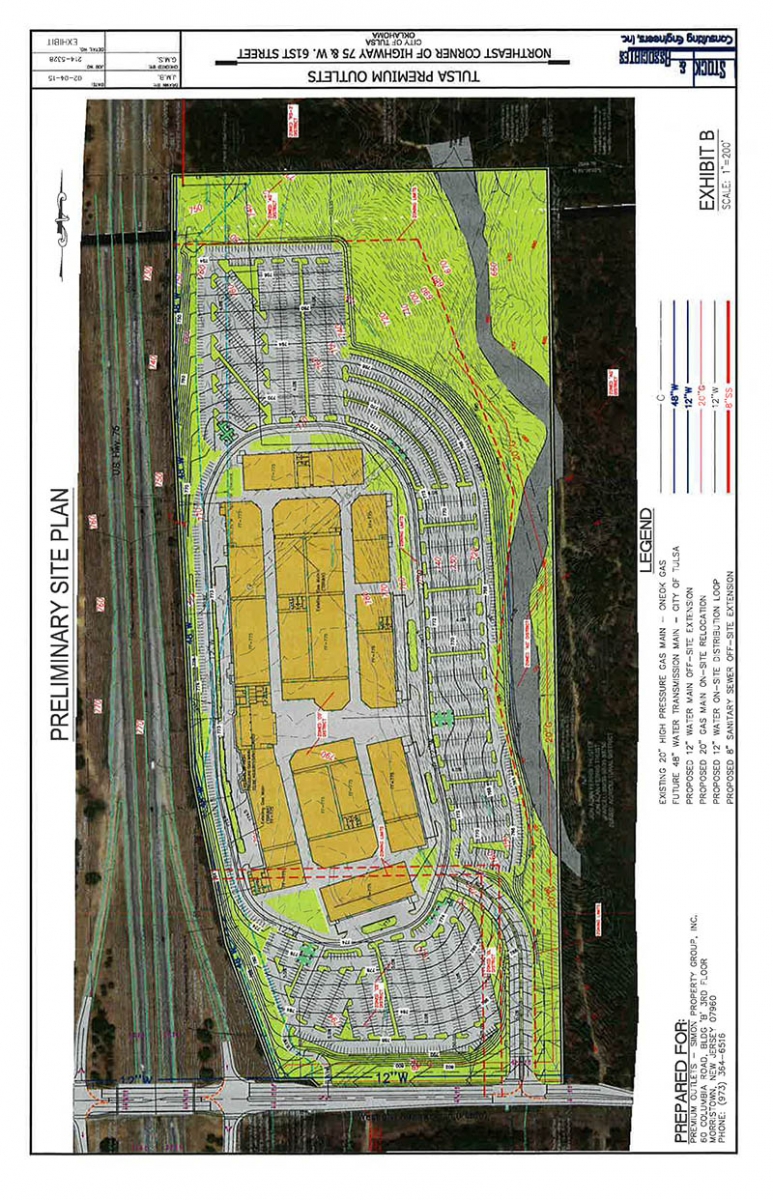Natural beauty
Tulsans make the case to protect Turkey Mountain
(page 1 of 4)
In case you missed it, competing plans for three outlet malls have been announced in the Tulsa area this past year. The one that’s raised the most ire is Simon Property Group’s proposed 800,000-square-foot development near the intersection of 61st Street and Highway 75 on Turkey Mountain’s topography. Opposition to the mall has grown steadily since the August announcement, which ultimately gave rise to the Tulsa Urban Wilderness Coalition. The resistance has reached a clear and eloquent critical mass, a decided ripening that’s accelerated over the past few months. Simon has twice requested additional time to prepare for its meeting with the Planning Commission, which is now expected to take place June 17.
After meeting with Simon representatives when they submitted an initial plan in February, the Tulsa Urban Wilderness Coalition voiced concerns that Simon had rushed its plans in order to stay competitive with the other developers and had failed to adequately safeguard the remaining green space and address infrastructure and drainage needs. Simon’s initial submittal to INCOG (the Indian Nations Council of Governments) included plans to build a retaining wall/fill area up to 70 feet high and replace the two-lane 61st Street bridge with one up to six lanes wide (see Preliminary Site Plan).
 The Southwest Tulsa Chamber of Commerce and Riverfield Country Day School hosted a public forum March 12, and District 2 Councilor Jeannie Cue held a forum for area residents March 16. At the District 2 meeting, residents voiced grave concerns about infrastructure, overwhelming traffic and prolonged road construction. They also questioned the wisdom of selecting Turkey Mountain for the mall when other areas of Tulsa are more in need of development. The impacts of the massive proposed retaining wall and increased pollution were also discussed. The most depressing moment at the March 16 meeting was when Clay Bird, director of the Mayor’s Office of Economic Development, responded thusly to a woman’s question about the project’s economic sensibility:
The Southwest Tulsa Chamber of Commerce and Riverfield Country Day School hosted a public forum March 12, and District 2 Councilor Jeannie Cue held a forum for area residents March 16. At the District 2 meeting, residents voiced grave concerns about infrastructure, overwhelming traffic and prolonged road construction. They also questioned the wisdom of selecting Turkey Mountain for the mall when other areas of Tulsa are more in need of development. The impacts of the massive proposed retaining wall and increased pollution were also discussed. The most depressing moment at the March 16 meeting was when Clay Bird, director of the Mayor’s Office of Economic Development, responded thusly to a woman’s question about the project’s economic sensibility:
“I look around here, and I mean, you ladies all look really nice. I would think that you’d probably like shopping at a Simon Premium Outlet."
About 300 people showed up to the public meeting Councilor Cue held March 17 at the Southern Hills Marriott. A second room was opened to accommodate the crowd, who for a full two hours overwhelmingly voiced pointed concerns about the development. The only representative of Simon, Tulsa attorney Lou Reynolds, left after the first hour but gave some insight into why Simon postponed its March 18 hearing with the Planning Commission.
“One of the things that we’ve learned is there are lots of people that have lots of questions, and they’re questions that take some level of skill to answer,” Reynolds said. “… And I visited with them, and I told them I thought it was premature for this matter to go to the Planning Commission with the questions that we had to date and the, if you will, the lack of answers and concrete information that I’d seen about the project.”
Reynolds named the 61st street bridge widening, the concerns of the neighboring Westside YMCA and storm water as issues Simon is trying to address.
With Simon being only distantly and minimally engaged in the public discussion, Clay Bird is taking most of the heat. His job is to attract and expand businesses with a primary focus on retail. After all, a massive portion of Tulsa’s operating budget is funded by sales tax—a fact Bird has hammered in with what could only be described as admirable indefatigability.
Five key concerns with the development crystallized at the March 17 meeting. We’ll start with two from a commenter who at one point received a full 30 seconds of applause.


.jpg)
.jpg)
